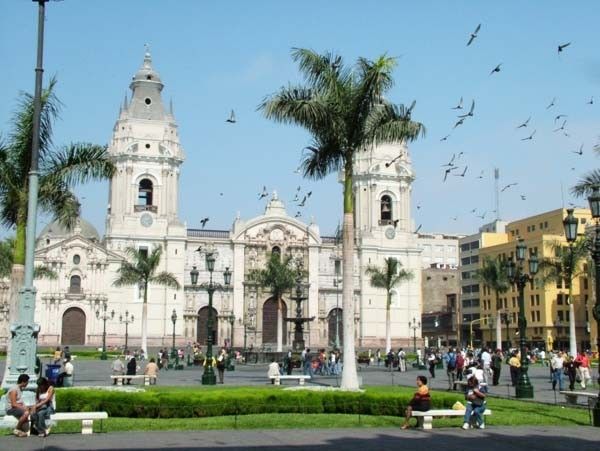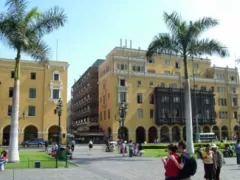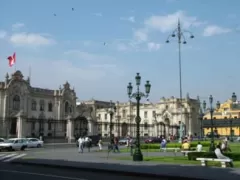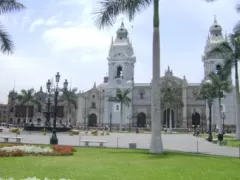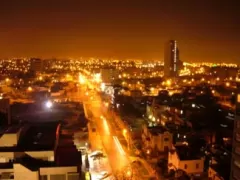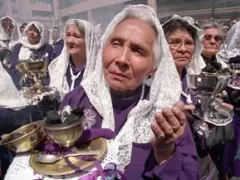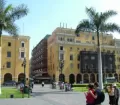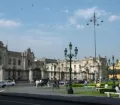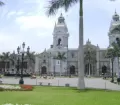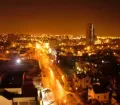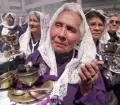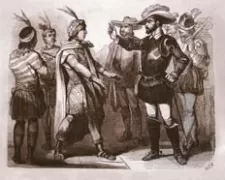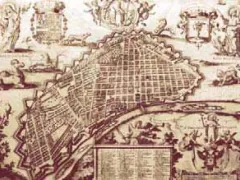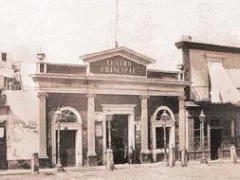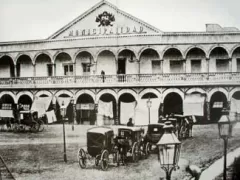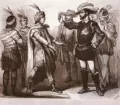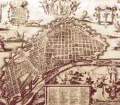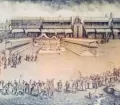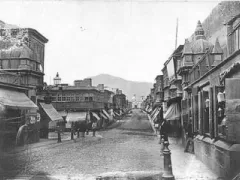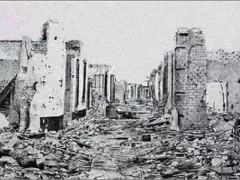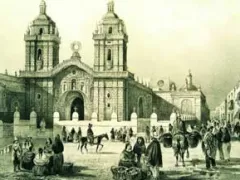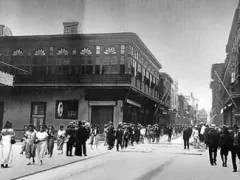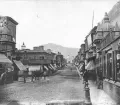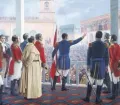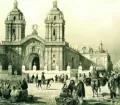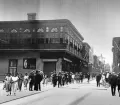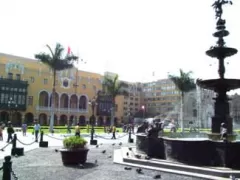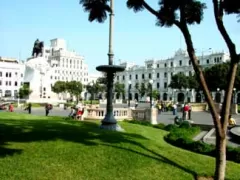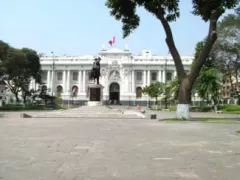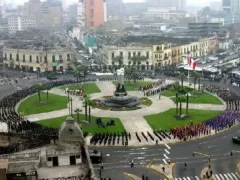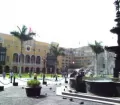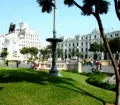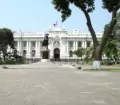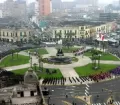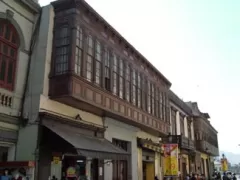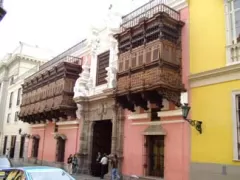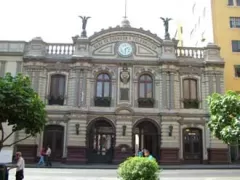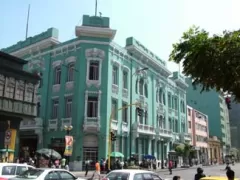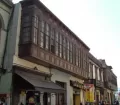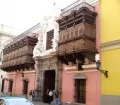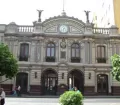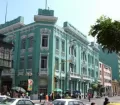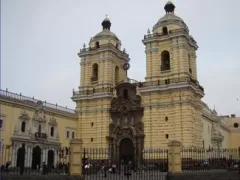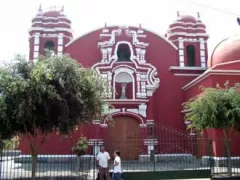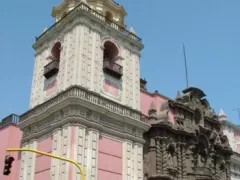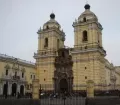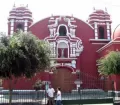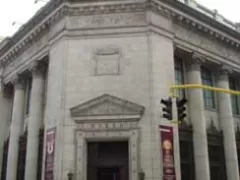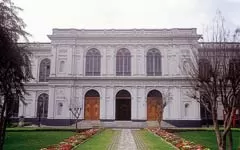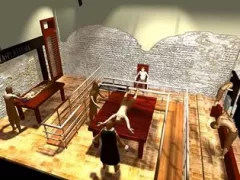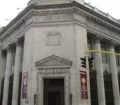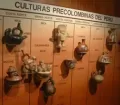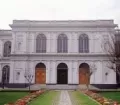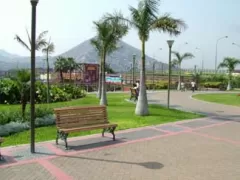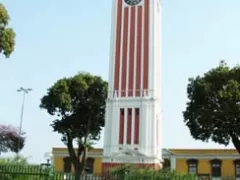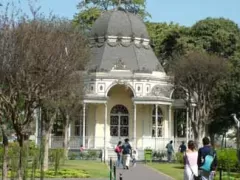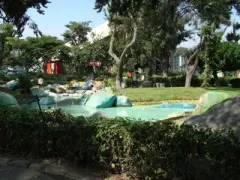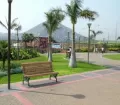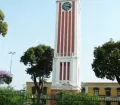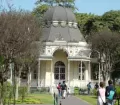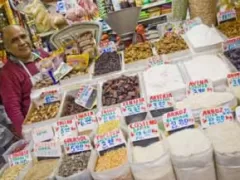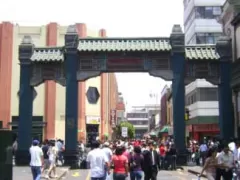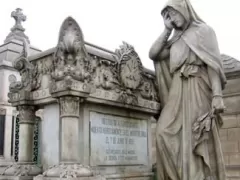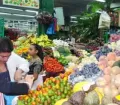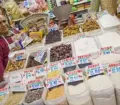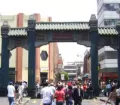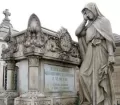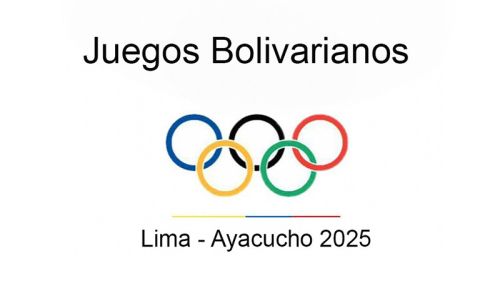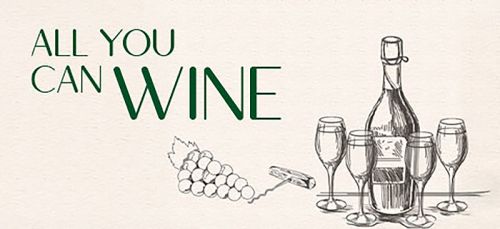Lima is not only the name for the capital of Peru and the province around it but also one of the city's districts is called Lima. The district of Lima is characterized by some very different zones. While the industrial zone and residential areas might not be very interesting, the historic city center, actually the colonial capital of Peru that Francisco Pizarro founded in 1535, is an absolute must for every visitor.
Lima's historical center was declared a World Heritage Site by the UNESCO in 1988 and a "Cultural Patrimony of Humanity" in 1996. Downtown Lima (known by Limeños only as Cercado de Lima) shows us the impressing history of the colonial City of Kings. The streets are filled with great examples of Spanish colonial architecture. The lay-out of the main streets, the plazas, parks, the mansions with typical Lima style wooden balconies and churches let us see and relive the viceroyalty and republican era. Don't miss the opportunity of exploring it during your Peru visit!
Take a city tour or discover this remarkable city on your own. Either way don't let yourself be scared off by good meant warnings that Limas City Center is very unsafe and dangerous. It's true that you should take precautions like in every capital city in the world, but after many years of complete deterioration and unsafe conditions Lima's city center today is cleaned up, relatively safe and nice.
So just wander around, open your eyes and heart to discover Lima's historical and multicultural past and present!
Facts & Figures about Lima
Only a part of today's district of the metropolis Lima was the "Capital of Peru" or the "City of the Kings" as Francisco Pizarro originally founded it. The district of Lima is the oldest in Lima. Actually its foundation was laid out already in 1535 by the Spanish conquerors, but the district as we know it today was only created by law on the 4th of August 1824 and officially established on the 22nd of December 1824. The district Lima has an area of 21.98 km².
The district is connected to the northern districts of Lima by the Avenida Alfonso Ugarte, to the eastern districts by the Avenida Grau, to the southern districts like Miraflores, Barranco and Chorrillos by the Avenida Arequipa and the Via Expresa, to the Western districts and Callao by the Avenida Argentina.
Constructing... (Official slogan of the Municipality of Lima)
The district of Lima is limited to the north by the districts San Martín de Porres, el Rímac and San Juan de Lurigancho, to the east by the district El Agustino, to the south by the districts La Victoria, Lince, Jesús María, Breña and Pueblo Libre and to the west by the Constitutional Province of Callao and the district San Miguel.
History of the Lima City Center
The history of the district Lima doesn't only start with the foundation of the colonial city by Francisco Pizarro in 1535. On the area known today as district of Lima people had been living for thousands of years and developed the countryside into green oases with extensive fields and fruit plantations. Just before the foundation of the "City of Kings", Lima was home to an estimated 150,000 indigenous people in a region called Cuismanco and governed by Taulichusco. On the 18th of January 1535 the Spanish conqueror Francisco Pizarro founded Lima on the territories and temples of the leader Taulichusco next to the Rimac River. "Pizarro's Palace", later subsequently called "Palace of the Viceroys of Peru" and today "Presidential Palace" was built on the site of Taulichusco's home. The Cathedral of Lima was build on the grounds of a religious temple.
At the beginning Lima only accommodated a dozen conquerors. Nevertheless the design and layout of Limas City Center was based on the model of cities in Spain (especially Seville). The first "mansions", at this time simple houses with reed roofs, were all built cuadra (block) by cuadra around Plaza Mayor in a chessboard style and with specific rules as determined by Francisco Pizarro himself (exact length of one block = 400 feet/122 m and a precise width of the streets = 40 foot/12.2 m). The indigenous population was forced to slavery labour, building the capital.
On the 3rd of November 1536 the Spanish Crown confirmed the founding of the "City of Kings" and a year later granted a coat of arms. Over the next few years Lima experienced very chaotic times due to struggles between different factions of the Spaniards. In 1542 Spain designated Lima as capital of the Viceroyalty of Peru and site of a Real Audiencia, the high court in 1543. From here the Spaniards ruled over vast areas in South America. Lima also became an important religious center. A Roman Catholic diocese was established in 1541 and converted to an archdiocese five years later. The city became the headquarters of the Spanish Inquisition in South America. In 1551 the first university of the Americas was established in Lima, the 'University of San Marcos' and in 1584 its first printing press.
The most prosperous era for Lima was the 17th century. By 1610 its population had already reached 26,000. At the beginning of the 17th century Lima was the political, economic, cultural and religious center of the Spanish colonies in South America. The city flourished under the constant influx of gold and silver. The centre of Lima was crowded with shops and stalls selling fancy stuff from around the world. Even wandering around the City Center today it isn't hard to image what Lima must have been like in these days. But the wealth attracted also many pirates. As a consequence a protective wall around the city was built in 1684.
The 18th century, a period of relative stagnation for Lima, was dramatically punctuated by a severe earthquake. In 1746 tremendous shaking nearly destroyed Lima completely. Only twenty houses in the whole city survived the quake and about 5000 residents (nearly 10% of the population) were killed. But with the wealth of a booming trade network the city was rebuilt with even more beautiful wide open avenues, striking gardens and imposing mansions.
On the 28th of July 1821 José de San Martín officially declared Peru's independence at the Plaza Mayor or also known as Plaza de Armas in Lima. But the fighting between the patriots and royalist continued until the complete defeat of the Spanish troops in Ayacucho 1824. During this time Lima suffered greatly due to the disruption of trade and the forced contributions imposed by both sides. Nonetheless Lima's population grew steadily.
After the war political turmoil and the lack of economic resources slowed down Lima's recovery. In 1850 a railroad line between Lima and Callao was completed. Others along the beach up to Chorrillos followed and five years later Lima started using gas lighting. To make way for the expansion of Lima the city walls were torn down in 1872. The peace and slow recovery of Lima was disrupted by the beginning of the "War of the Pacific" (1879 to 1883). Lima was invaded by Chileans troops. The city was badly looted. Historical and cultural highly important objects were stolen. After the plundering many buildings including the famous National Library and many churches were burnt down. Civilians were forced to surrender all their valuables. The invasion of Lima only ended after two years in 1883.
From the 1890s to the 1920s Lima went through a process of urban renewal and expansion. During the "Belle Epóche" in the 1920s and 1930s several buildings of the historic centre including the Government Palace and the Municipal Palace were renovated. The Plaza San Martin's attractive colonnades and the Gran Hotel Bolivar were erected and the city was supplied with its first drinking-water and sewage systems. On the 20th of May 1940 another earthquake destroyed once again most of the city and Lima had to be rebuilt another time.
Due to industrialization, migration from other parts of Peru, economic mismanagement and natural disasters Lima, the old colonial and magnificent city dramatically changed in the 20th century. While the rich population had moved from the city center to the newly established upper-scale districts of San Isidro and Miraflores or even to the east of Lima (Monterrico and La Molina), the middle class lived in the districts in between and the very poor in the ever growing "pueblos jóvenes" (shanty towns). The district of Lima not only had lost its past influence and beauty, but also its charm and character. By the end of the 20th century the district of Lima (and the ever growing metropolis of Lima) had to cope with many serious problems: A complete decline of the once beautiful city center, crime, prostitution, drugs, rubbish all over the city, massive traffic and the lack of infrastructure, just to name a few.
After many years of complete deterioration Lima began to recover from its former bad image at the end of the 20th and beginning of the 21st century. Since 1995 the Municipality of Lima has been implementing a successful recovery plan for the historic center of Lima, which was finally declared a "Cultural Patrimony of Humanity" by the UNESCO in 1996. The Municipality of Lima "cleaned" the city center in an effort to remove many of the persistent street vendors (unfortunately there a still quite a lot left), beggars and other dodgy figures. Programs initiated by the government encouraged the citizens to be proud of their city, renovate buildings and 'shape up' streets and parks in an attempt to recuperate the city's cultural heritage and of course to promote tourism.
Also other mayor works in Limas historical center like new illumination, remodeling of parks and plazas, the repaving of sidewalks with terra cotta, the planting of thousands of trees and daily maintenance paid off. The city center is much safer and nicer. And while wandering around the district Lima you may be able to feel how life was in splendorous Lima.
Places to visit & tourist attractions in Lima
The district of Lima is characterized by some very different zones. While the industrial zone and residential areas might not be very interesting, the historic city center, actually the colonial capital of Peru, is an absolute must for every visitor. Downtown Lima (known by Limeños only as Cercado de Lima) is a little treasure in the middle of the hectic and noisy metropolis. Today the core of colonial Lima still exists. Even if only a few original colonial mansions survived you will be surrounded by Lima's unique architectural style from the Colonial and Republican era with amazing old mansions with their typical balconies, beautiful maintained plazas and numerous churches.
Plazas
A good starting point for a tour through the city center is one of the numerous plazas. Many of the city's most attractive buildings surround them. Plaza Mayor (named also Plaza de Armas) is Lima's main square. It's the oldest public place in Lima. In 1535 Francisco Pizarro founded Lima at exactly this point and designed a main square as the central point of the future Lima with all important institutions built around it. On the north side of Plaza Mayor is the Palacio de Gobierno, the presidential residence and in colonial times the location of Francisco Pizarro's house - later the Palace of the Viceroys. On the east side you find flanked by the Archbishops Palace the Cathedral of Lima. The "Palacio Municipal" is located on the west side of Plaza Mayor. Depending on their importance and rank wealthy and influential immigrants were allowed to build their mansions on properties near the Plaza Mayor. Wander around the Plaza and adjoining streets. Or take a ride on a horse carriage. Even if it sounds a little "touristy" it's really fun.
A must for every visitor is as well Plaza San Martin, just five blocks from Plaza de Armas. The beautiful plaza is surrounded by well preserved Republican buildings influenced by the French architectural style typical in Lima at the beginning of the 20th century. Just opposite the square you find the famous and most elegant hotel in Lima, the Gran Hotel Bolivar.
Other plazas worth a visit (among many others in Lima) are the Plaza Bolivar (also known as Plaza de la Inquisicion) or the Plaza del Congreso, Plaza de Italia (a great place for same typical Peruvian food on Sundays) and the Plaza de Acho (considered to be the oldest bullfight ring in America).
Historical Buildings
From the Plaza Mayor most attractions are in walking distance. While strolling around have your eyes open for Lima's amazing architecture. Don't miss the two oldest historical buildings in the center the Casa de Aliaga and the Casa de Pilatos.
Visit the Palacio Torre Tagle (today the Peruvian Foreign Affairs Ministry), the Casa del Oidor and the Casa Negreiros (both with amazing balconies), the Casa de Riva Agüero (where you find the Museo de Artes y Tradiciones Populares), the Casa Miguel Grau (where the famous Peruvian Navy Admiral lived) and the Casa de la Moneda (which houses today the Museo Numismatico).
Very interesting is a visit to the Casa de Correos y Telegrafos (the Central Post Office) and of course the Estacion de Desamparados (Railway Station) which is since 2009 the home to a library.
Historical Churches
Lima is not only the "City of Kings" but also the "City of Churches". Especially in the city centre you can find nearly at every corner a church, most of them dating back to colonial times. The most visited church next to the Cathedral is the Church and Convent of San Francisco. Inside you will be amazed by the beautiful preserved wooden stairs, the outstanding library with over 25000 volumes, the "Zurbarán - Hall", small chapels, distinctive religious paintings and small patios of typical Spanish style decorated with lovely tiles from Seville. Definitely the absolute highlight of the tour is the descent into the convents catacombs that served until 1808 as a burial ground.
But there are many more churches that a worth a visit: The Iglesia de Santa Rosa (Lima's patron saint), the Iglesia de las Nazarenas ("home" to the "Señor de Milagros"), the Convento de los Descalzos which displays precious paintings of the Lima, Cusco and Quito School, the Iglesia de San Sebastian (one of Lima's oldest churches), the Iglesia La Merced with its amazing stone arcades and the Iglesia y Convento Santo Domingo which houses one of Lima's best preserved monastery's.
Museums
Lima's city center is home to numerous great museums. One of the most visited museums in the city center is the Museum of the Inquisition. Visitors are welcomed by friendly guides that are more than happy to explain everything from the history to the effects the Spanish Inquisition had on the Peruvian development and the tasks of the Congress nowadays. This is a great place to learn more about Lima and have fun at the same time.
Just two blocks from the Plaza Mayor you find the Museum of the Central Reserve Bank of Peru with an impressive collection of contemporary Peruvian paintings, an exhibition of more than 4000 pieces of pre-Columbian art and the absolutely stunning gold collection of Hugo Cohen.
The Lima Art Museum presents 3000 years of Peruvian art to its visitors. The museum has a large selection of pre-Columbian textiles and ceramics, pictures and furniture from Colonial and Republican times and a significant selection of paintings and photographic works from modern times. Just across the street you find the Italian Art Museum (the only museum in Lima that displays remarkable local craftsmanship, paintings and European works side by side).
Worth a visit are also many other museums: The Museo de Artes y Tradiciones Populares located in the Casa de Riva Agüero, the Museo Postal which shows a lot of diverse material somehow related to the Peruvian postal history, the Museo Casa José Carlos Mariategui displaying a historical collection of the grand Peruvian writer, the Museo Casa Miguel Grau dedicated to the famous Peruvian Navy Admiral, the Museo de Arqueologia Josefina Ramos Cox which displays objects recovered from the archaeological complex at Maranga and the Museo de Cerebros (the only brain museum in Latin America).
Parks
Sightseeing can be quite exhausting. Why not take a rest and relax in one of the green oasis in the middle of the city. The Parque de la Muralla (The Park of the Wall) for example is a surprisingly quiet and restful place amidst the crowded, hectic Historical City Center. The park is located just behind the San Francisco Church at the banks of the Rimac River presenting recovered parts of the old city wall that protected Lima.
Unfortunately a little bit more crowded but full of Lima's and Peru's more recent history is the Parque Universitario just a few blocks from the Plaza San Martin. Famous is its clock tower, a present from the German community in Peru that plays every day at noon the Peruvian Anthem.
Adjacent to downtown Lima you find the Parque de la Exposición, also known as Parque de la Cultura or Gran Parque de Lima, an oasis of peace and tranquility amidst Lima's noisy and hectic hustle and bustle. You can enjoy the newly renovated Museo de Arte with its beautiful gardens, numerous pavilions, theaters and stages, restaurants and food vendors, monuments, fountains, a small pond with paddle boats and a Japanese garden with koi ponds (a present from Japan to the city of Lima). The park houses regularly fairs and festivals, often showcasing arts and crafts, foods and cultural events from other parts of Peru.
And last but not least a must for every Lima visitor is Parque de la Reserva. The park houses the largest fountain complex in the world which is beautifully illuminated at night. A colourful laser light program synchronized with classical and Peruvian music makes the fountains sparkle and shine as the water flows in unique patterns and shapes.
Other attractions you shouldn't miss
Mercado Central / Central Market
The Mercado Central located east of Av. Abancay just two blocks from Plaza Bolivar and the Congress, occupies a whole block and stretches along a wide area. Here you can buy just about anything. Inside the main building you find the food market with fresh fruits and vegetables, meat from rabbit to guinea pig to whole pigs, fish and seafood, groceries of all kinds and little food stands where "Mamá" or "Jefe" cooks a simple, but fresh and delicious menu for a few Soles. Around the building are hundreds of little stores that sell clothes, shoes, kitchen- and tableware, toys, books, everything you can think of and even alive animals. Mercado Central is a crowded, but great place for people who love this kind of shopping experience. Please don't take any valuables with you.
Barrio Chino / China Town
(Jr. Ucayali block 7, Calle Capón, Lima)
Just a few blocks east of the historic city center behind the Mercado Central, is Lima's Barrio Chino (South America's largest Chinatown). On block seven of the Jiron Ucayali you find an amazing Chinese arch, a gift of the Chinese government that symbolizes the friendship between China and Peru which leads you to Calle Capón, a very special gastronomic and shopping attraction of Lima. Barrio Chino is a perfect place to feel and taste the unique mixture of the Chinese-Peruvian culture. One of the main attractions, apart from the significant oriental influence in the architecture and shopping facilities, are the Chinese restaurants called "chifas". They serve Chinese food with significant Peruvian influence. Try it and you'll love it!
Cementerio Presbitero Matias Maestro
The Cemetery Presbitero Matias Maestro is Lima's City of the Dead with streets, plazas, buildings and gardens like any other city has. Its 766 mausoleums are the resting place for the men and women who wrote Peru's history. Take a guided tour through the colonial graveyard and enjoy the amazing architecture reflected in the mausoleums, tombs and crypts. Opening hours: Monday to Sunday 08.30 am to 05.00 pm (for a night tour please book in advance)


